
17 Customer Onboarding Strategies to Delight and Build Lasting Relationships
1. Build user trust from the beginning
Establishing user trust early on in the relationship makes it easier to convert them, first into signups, and then into paying customers.
How can you do it?
- Professionally respond to user feedback and comments on social media and review sites. These are often the first touchpoints in the customer journey.
- Offer transparent pricing plans.
- Invest in professional-looking marketing collateral, like ads, home page, etc.
- On your sign-up and landing pages, include testimonials from satisfied customers highlighting the benefits of your product. That’s how Wikijobs managed to boost their conversions by 34%. And if it’s a video testimonial, the boost could be as high as 86%.
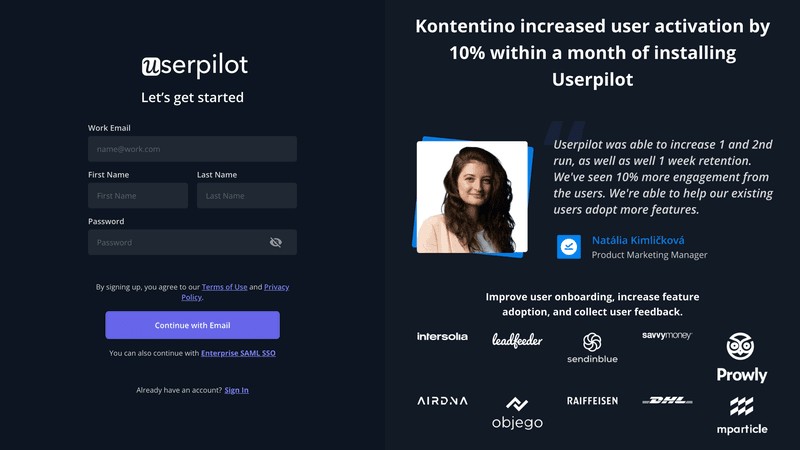
2. Create a welcome series for new customers
When new users sign up for the product, make them feel welcome from the get-go.
When users first log in, trigger a welcome modal to say hi and show users what to do next.
You can include a CTA like ‘Start now’, which triggers an onboarding flow. Miro goes one step further and gives users a choice of templates so they can start using the product straightaway.
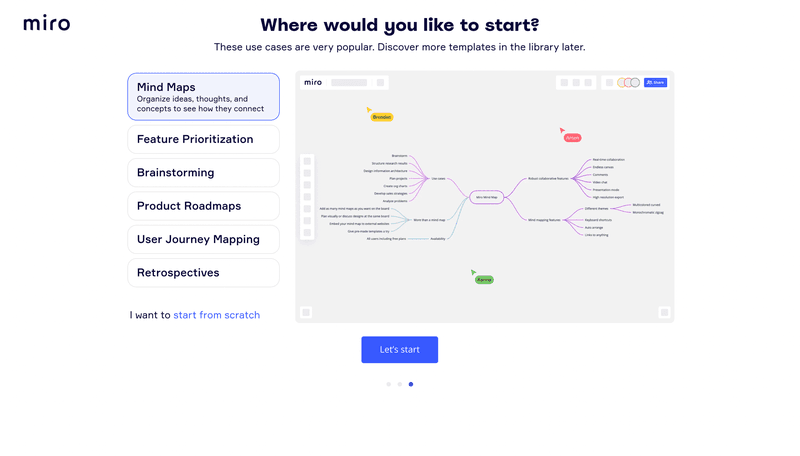
And what if your users don’t log into the product immediately after signing up?
Send them a welcome email.
Reassure them they’ve done the right thing by signing up by adding another testimonial and those cool customer logos. More importantly, reiterate the benefits of the product and include a CTA button that takes the user to the login page.
You can also include links to useful onboarding resources.

3. Use empty states to guide new customers through your product or service
Empty states are scary. You log into the product and see nothing but a blank page.
And they are a terrible waste as well.
Use the space to kickstart the onboarding process.
One easy way to do it is by providing links to links to tutorials or guides.
And, of course, a CTA button that triggers an onboarding flow or a welcome survey.
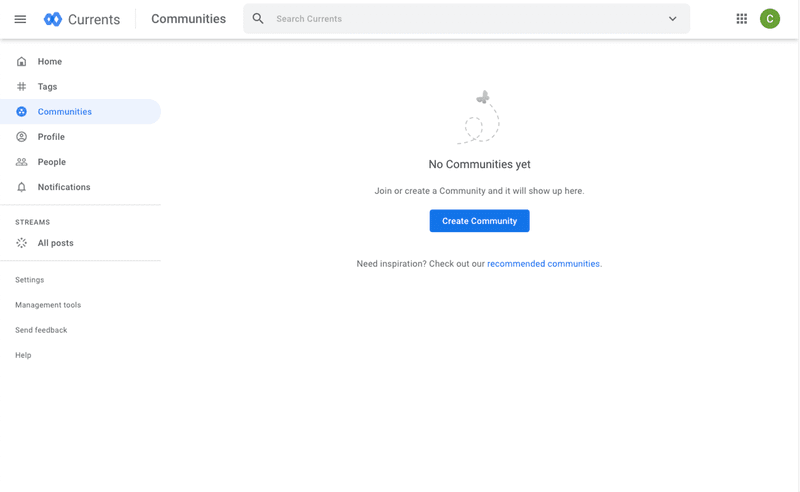
4. Assign a call with a customer success manager
Let’s be honest: if you’re targeting small businesses or are in B2C, providing high-touch onboarding and support may not be a viable option because you can’t hire enough people.
However, if you’re after the medium-sized or enterprise market, assigning a dedicated customer success manager to your customers is totally worth it. It fosters stronger relationships and enhances customer satisfaction and retention by proactively addressing their needs.
So when a new user logs into the product, invite them to schedule a call with a modal.
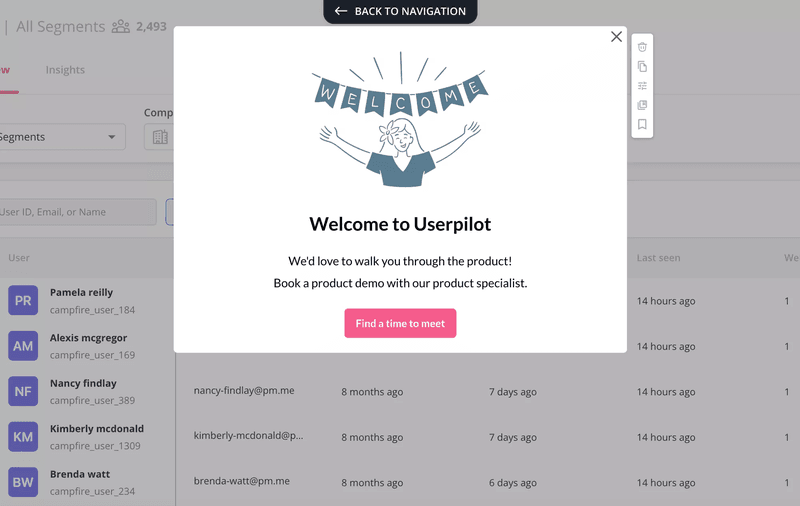
5. Utilize personalized in-app messages
Personalization in onboarding reduces the time to value. Instead of distracting users with unnecessary information, personalized flows take users directly to the features that they need to complete key tasks.
To offer personalized in-app messaging, you need to:
- Analyze user in-app behavior to understand their needs and identify the most optimal routes to activation and adoption.
- Design onboarding experiences tailored to those needs.
- Use signup and welcome surveys to profile users.
- Trigger relevant experiences based on their responses and completed events.
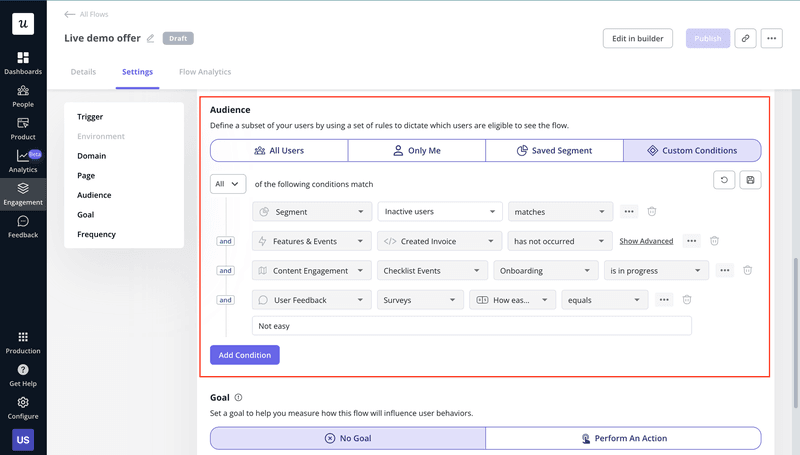
6. Provide a customer onboarding checklist to guide the customer journey
Lots of Userpilor customers, like Sked Social or Attention Insight, have boosted their activation and adoption rates using checklists.
No surprise, as they are one of the most powerful onboarding tools.
By telling users what they have to do and in what order, they provide structure to the onboarding experience.
Best part?
We are programmed to follow checklists. When we have our tasks planned and clearly laid out, we find it difficult to move on before completing them. And the closer we are to the end, the stronger the desire to get it all done. That’s why they’re particularly effective when equipped with a progress bar.

7. Offer in-app guidance to proactively assist customers
When it comes to support, you have two options: either deal with issues only when they arise or use what you know about your product and customers to anticipate and prevent them.
It goes without saying that the latter provides a better customer experience.
In SaaS, it’s easy to do because you can use product analytics to track every single user interaction with the product to identify issues and then trigger in-app messages with assistance.
For example, an interactive walkthrough to help users get the most out of a feature if they know that they aren’t using all its capabilities.
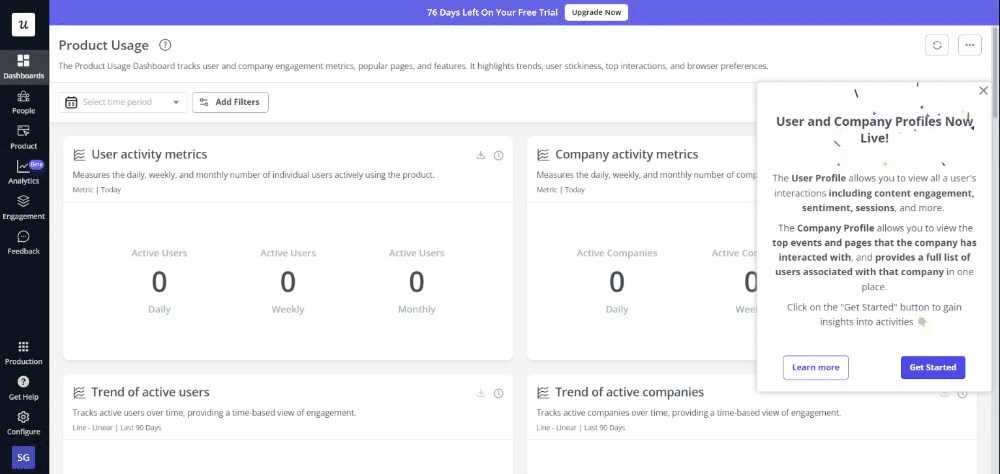
8. Provide video tutorials to cater to different learning styles
Your audience retains about 95% of a video message. Considering that it’s only 10% for written text, using onboarding videos is a no-brainer.
Videos are more engaging, and they’re brilliant for demonstrations, such as how to use a feature like the ones we offer our users.
Creating such videos isn’t challenging either. All you need is a screen recorder, and with AI video editing tools you can automatically generate captions, voiceovers, or even avatars.

9. Host live or pre-recorded webinars to provide in-depth training
Webinars kill several birds with one stone. They:
- Help users maximize the product value by showing them how to use it to achieve specific goals.
- Help you build a community around the product.
- Establish your authority in the field and help build trust.
- Attract potential customers looking for solutions to their problems.
For example, in one of our recent webinars, we offered our users tips on how to onboard enterprise customers. Apart from our loyal customers, the webinar was attended by other viewers interested in the subject.
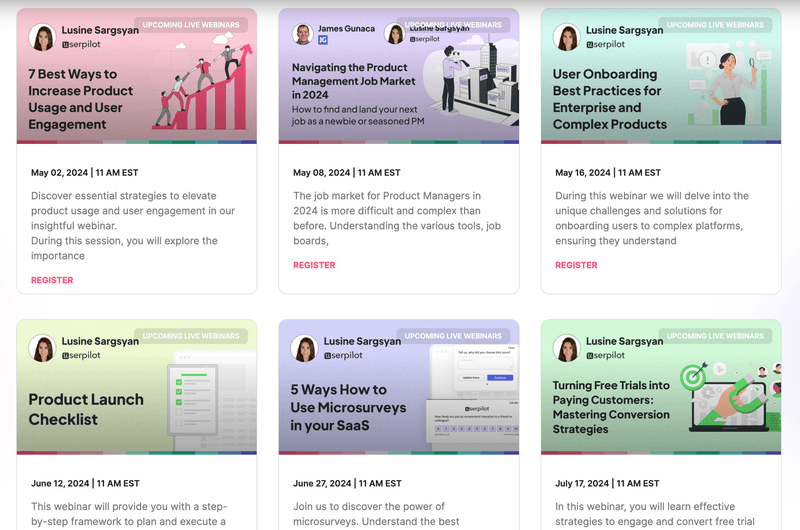
10. Utilize gamification to make learning fun
Gamification comes in different forms:
- Rewards and badges.
- Quizzes and challenges.
- Leaderboards and social media sharing.
- Milestone celebrations.
They all have the same purpose: to make onboarding more engaging and enjoyable.
And if you’ve even used Duolingo, you probably know how great it is for user retention.

11. Collect customer feedback to identify areas for improvement
Collecting customer feedback offers 2 main benefits:
- It allows you to identify opportunities to improve your product – and the onboarding process. For example, you can send users an onboarding survey sometime after they sign up to ask how well it supports their needs.
- It makes customers feel valued when you show that you’re interested in their views and opinions. And increases trust. As long as you close the feedback loop by communicating the outcomes and following with tangible actions.

12. Provide on-demand support
To smoothen the path to activation and adoption, provide users with ongoing support. Whenever they need it.
Just like with the customer success team, you can’t possibly hire enough customer support agents to offer 24/7 support. And most customers prefer solving simple problems independently anyway.
The solution? Self-service support via a resource center with how-to guides, tutorials, case studies, and chatbots.
By providing self-serve resources, you reduce the customer support load and enable them to deal with complex issues.
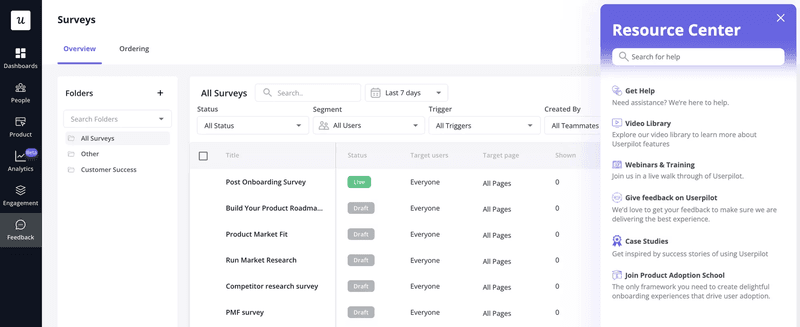
13. Conduct A/B testing on different onboarding processes
Sometimes educated guesses are enough to choose the best onboarding experience. A modal with a CTA is almost certain to drive more engagement than one without it.
However, how do you know which of the two different CTA buttons is more effective?
Through experiments like A/B tests.
In the test, you run the two versions simultaneously with two halves of the test group. And watch which of them performs better. Brilliant!
Their only downside is that they can take a lot of time if you’re testing lots of variables. In this situation, multivariate testing is more appropriate.

14. Create an analytics dashboard to track user onboarding progress
Analytics dashboards allow you to track multiple metrics from one place. In this way, you get a a comprehensive overview of key trends related to a product performance aspect. For better cross-functional collaboration and informed decision-making.
To measure the effectiveness of your onboarding, track metrics like:
- New sign-ups.
- User activation rate.
- User adoption rate.
- Time to activation.
- Free-to-paid conversions.
- Churn rate.
- Retention rate.
In addition, visualize the onboarding journey as funnels and paths to identify roadblocks that hinder user progress.

15. Analyze churn patterns among new customers
User churn patterns can help you understand why it happens so that you can prevent it in the future.
You can identify reasons for user churn from product analytics. For example, by analyzing the paths that users take before they drop off, you can pinpoint behaviors indicating a user may be at risk. By tracking the event, you can engage them in time to avert it.
Back analytics up with cancellation surveys. Use them to ask for reasons why users decide to leave and what you could do to retain them.

16. Develop re-engagement campaigns for inactive customers
The fact that users churn doesn’t mean you can’t get them back. Sometimes a little nudge is enough to re-activate them.
The problem is reaching the users. In-app messaging doesn’t work anymore because they don’t use the product.
Solution? Email campaigns, like the Grammarly one below, are a good start.
Don’t stop there. Use your creativity. Duolingo, for example, has created an icon that ages as user inactivity continues.

Try Userpilot Now
See Why 1,000+ Teams Choose Userpilot

Conclusion
The customer onboarding strategies enable you to create engaging and purposeful onboarding experiences based on customer data.
Thanks to them, you can lead customers to value in less time, drive adoption, and improve satisfaction and long-term retention.
If you’d like to learn more about Userpilot and how it can help you with your customer onboarding program, book the demo!
FAQs
What is customer onboarding?
Customer onboarding is the process during which you introduce new users to your product features and capabilities.
It’s not only about telling them about the features or showing how they work. It’s about encouraging them to use them actively and training them on how to do it.
Why is customer onboarding important?
User onboarding helps users realize the product value and activates them. When they know what the product can do for them, they’re more likely to adopt it as the default solution to their problems.
Product activation and adoption are linked to other key metrics: retention, revenue, and referral.
Let me explain:
Users who regularly see how the product solves their problems are more likely to continue using the product, renew their subscriptions, upgrade to higher plans, and recommend the product to their mates.







